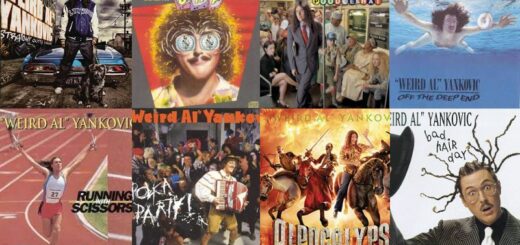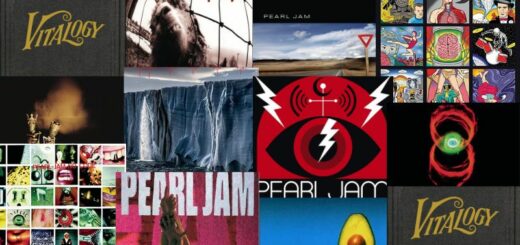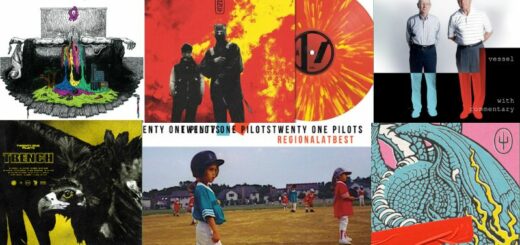The List Of Beatles Albums In Order of Release
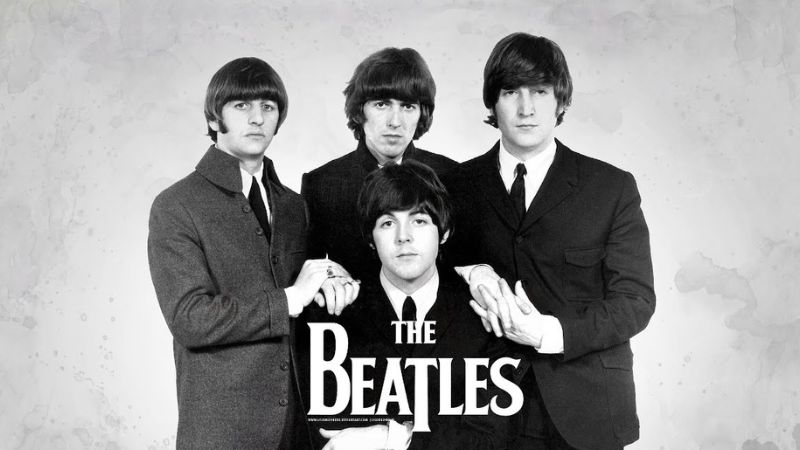
Beatles Albums in Order: The iconic English rock band from Liverpool, burst onto the music scene in 1960, forever altering the landscape of popular music.
The Beatles, an iconic English rock band hailing from Liverpool, emerged onto the music scene in 1960, forever altering the landscape of popular music. Comprised of the legendary quartet of John Lennon, Paul McCartney, George Harrison, and Ringo Starr, the Beatles are hailed as the most influential band in the history of music. Their groundbreaking contributions to 1960s counterculture and the elevation of popular music as a genuine art form have left an indelible mark on the world.
Rooted in a blend of skiffle, beat, and 1950s rock ‘n’ roll, the Beatles pushed musical boundaries by incorporating elements of classical music and traditional pop in innovative ways. Their versatile talents led them to explore an array of music styles, ranging from folk and Indian melodies to psychedelia and hard rock. Pioneers in recording techniques, songwriting, and artistic presentation, the Beatles revolutionized the music industry while simultaneously serving as leaders of the era’s youth and sociocultural movements. Under the guidance of manager Brian Epstein and producer George Martin, the Beatles transformed from local club performers into international sensations, earning them the affectionate moniker “the Fab Four.”
Their meteoric rise to fame culminated in the unforgettable phenomenon known as “Beatlemania.” Through their timeless albums, such as “Rubber Soul,” “Revolver,” and “Sgt. Pepper’s Lonely Hearts Club Band,” the Beatles continued to shape the course of music history. This quartet’s impact extended beyond music, influencing the realms of fashion, art, and even spirituality. With estimated global sales of 600 million units, they remain the best-selling music act of all time, and their numerous accolades, including Grammy Awards and Rock and Roll Hall of Fame induction, attest to their enduring legacy.
Though the group disbanded in 1970, the individual members, notably Paul McCartney and Ringo Starr, continue to shape the world of music with their solo careers, ensuring that the Beatles’ legacy lives on. So, if you are a die heart fan of Beatles Albums then check out here we have list of Beatles albums in order of release so far.
All Beatles Albums Available on: Apple Music
How many albums does Beatles have?
The discography of English rock band the Beatles released 12 studio albums (17 in the US), 5 live albums, 51 compilation albums, 36 extended plays (EPs), 63 singles, 17 box sets, 22 video albums and 53 music videos.
All Beatles Albums In Order: Check Out The List Of Beatles Albums In Order Here!
- Please Please Me — 22 March 1963
- With the Beatles — 22 November 1963
- Introducing… The Beatles — 10 January 1964
- Meet the Beatles! — 20 January 1964
- The Beatles’ Second Album — 10 April 1964
- A Hard Day’s Night — 10 July 1964
- Something New — 20 July 1964
- Beatles for Sale — 4 December 1964
- Beatles ’65 — 15 December 1964
- Beatles VI — 14 June 1965
- Help! — 6 August 1965
- Rubber Soul — 3 December 1965
- Yesterday and Today — 20 June 1966
- Revolver — 5 August 1966
- Sgt. Pepper’s Lonely Hearts Club Band — 26 May 1967
- Magical Mystery Tour — 27 November 1967
- The Beatles (“The White Album”) — 22 November 1968
- Yellow Submarine — 13 January 1969
- Abbey Road — 26 September 1969
- Let It Be — 8 May 1970
Order of Beatles Albums List
1. Please Please Me 1963)

Tracks
- I Saw Her Standing There
- Misery
- Anna (Go To Him)
- Chains
- Boys
- Ask Me Why
- Please Please Me
- Love Me Do
- P.S. I Love You
- Baby It’s You
- Do You Want To Know A Secret
- A Taste Of Honey
- There’s A Place
- Twist And Shout
“Please Please Me,” the Beatles’ debut studio album, was produced by George Martin and released on EMI’s Parlophone label in the UK on March 22, 1963. The album comprises 14 songs, featuring a mix of cover tracks and original compositions by John Lennon and Paul McCartney. The Beatles had recently signed with EMI and recorded their hit single “Please Please Me,” prompting Martin to shift from a live album to a studio recording. The album achieved immense success in the UK, setting a record by remaining in the Top 10 for over a year.
Although not initially released in the US, it later appeared in various forms as Beatlemania swept the nation. “Please Please Me” continues to be celebrated as a classic, earning a spot on Rolling Stone’s list of the “500 Greatest Albums of All Time.
2. With the Beatles (1963)
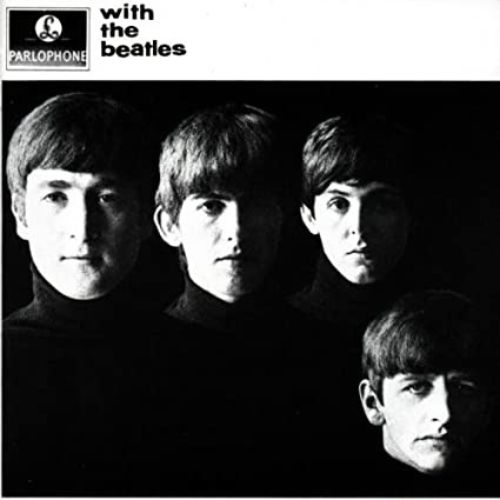
Tracks
- It Won’t Be Long
- All I’ve Got To Do
- All My Loving
- Don’t Bother Me
- Little Child
- Till There Was You
- Please Mister Postman
- Roll Over Beethoven
- Hold Me Tight
- You Really Got A Hold On Me
- I Wanna Be Your Man
- Devil In Her Heart
- Not A Second Time
- Money (That’s What I Want)
“With the Beatles,” the second studio album by the English rock band the Beatles, marked a significant moment in music history. Released on November 22, 1963, eight months after their debut “Please Please Me,” the album showcased the band’s evolution. Produced by George Martin, it featured eight original compositions, including George Harrison’s debut solo piece, “Don’t Bother Me.” The album also included six covers of rock and Motown hits. The iconic cover photograph by Robert Freeman became iconic.
In the United States, its tracks were split between two Capitol Records albums. “With the Beatles” earned a place on Rolling Stone’s list of the 500 Greatest Albums of All Time and remains a timeless classic.
3. Introducing… The Beatles (1964)
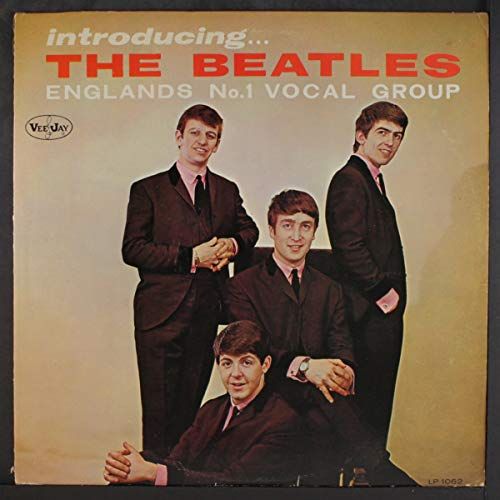
Tracks
- I Saw Her Standing There
- Misery
- Anna (Go to Him)
- Chains
- Boys
- Love Me Do
- P.S. I Love You
- Baby It’s You
- Do You Want to Know a Secret
- A Taste of Honey
- There’s a Place
- Twist and Shout
“Introducing… The Beatles” stands as the debut studio album by the English rock band, The Beatles, in the United States. Originally slated for a July 1963 launch, it eventually hit the shelves on January 10, 1964, via Vee-Jay Records, preceding Capitol’s “Meet the Beatles!” by ten days. Although “Meet The Beatles!” claimed the top spot on the U.S. album chart for eleven consecutive weeks, “Introducing…The Beatles” settled at No. 2 for nine consecutive weeks due to a release timing dispute. Ultimately, Vee-Jay sold over 1.3 million copies by late 1964, earning it gold and platinum certifications from the RIAA on July 24, 2014.
4. Meet the Beatles! (1964)
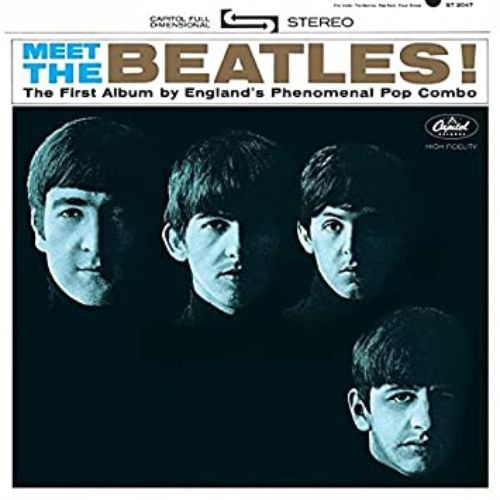
Tracks
- I Want to Hold Your Hand
- I Saw Her Standing There
- This Boy
- It Won’t Be Long
- All I’ve Got to Do
- All My Loving
- Don’t Bother Me
- Little Child
- Till There Was You
- Hold Me Tight
- I Wanna Be Your Man
- Not a Second Time
“Meet the Beatles!” stands as a seminal studio album by the British rock legends, the Beatles. Released in the United States on January 20, 1964, it marked the band’s first American album under Capitol Records. This iconic release swiftly ascended to the number one spot on the popular album chart on February 15, 1964, where it reigned supreme for an impressive eleven weeks before yielding its throne to “The Beatles’ Second Album.” The album’s cover featured Robert Freeman’s legendary Beatles portrait from their UK album “With the Beatles,” subtly enhanced with a striking blue tint, leaving an indelible mark on the band’s early American success.
5. The Beatles’ Second Album (1964)

Tracks
- Roll Over Beethoven
- Thank You Girl
- You Really Got a Hold on Me
- Devil in Her Heart
- Money (That’s What I Want)
- You Can’t Do That
- Long Tall Sally
- I Call Your Name
- Please Mr. Postman
- I’ll Get You
- She Loves You
“The Beatles’ Second Album” stands as a pivotal release in the Beatles’ discography. Released in April 1964, it swiftly claimed the number 1 spot on the Billboard Top LPs chart in the US. The album primarily comprised leftover tracks from “With the Beatles” and the “Long Tall Sally” EP, featuring rock and roll and R&B covers, along with non-album B-sides and the hit single “She Loves You,” showcasing the band’s versatility. Critics hail it as their purest rock and roll album, noted for its soulful interpretations of black music hits and original compositions. Over the years, it has been reissued in various formats, preserving its historical significance in the Beatles’ journey.
6. A Hard Day’s Night (1964)

Tracks
- A Hard Day’s Night
- I Should Have Known Better
- If I Fell
- I’m Happy Just To Dance With You
- And I Love Her
- Tell Me Why
- Can’t Buy Me Love
- Any Time At All
- I’ll Cry Instead
- Things We Said Today
- When I Get Home
- You Can’t Do That
- I’ll Be Back
“A Hard Day’s Night,” the third studio album by the Beatles, debuted on July 10, 1964, via Parlophone, coinciding with the release of their film of the same name. In the United States, it hit the shelves on June 26, 1964, through United Artists Records, boasting a distinct tracklist including selections from George Martin’s film score. Unlike their previous albums, all 13 tracks on “A Hard Day’s Night” were penned by the prolific songwriting duo, Lennon and McCartney, showcasing their evolving partnership. The album featured iconic hits like “A Hard Day’s Night” and “Can’t Buy Me Love” and introduced George Harrison’s influential 12-string electric guitar sound, leaving a mark on the folk rock and jangle pop movements.
7. Something New (1964)
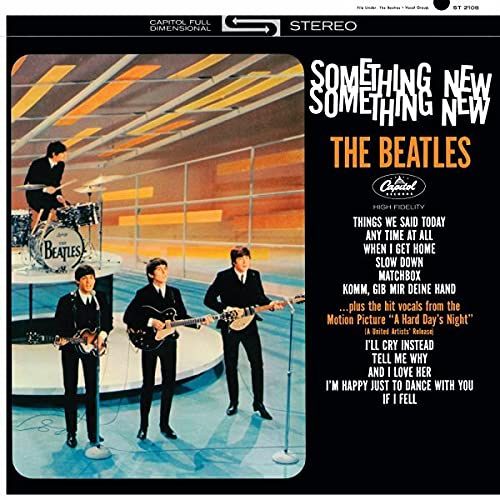
Tracks
- I’ll Cry Instead
- Things We Said Today
- Any Time at All
- When I Get Home
- Slow Down
- Matchbox
- Tell Me Why
- And I Love Her
- I’m Happy Just to Dance with You
- If I Fell
- Komm, Gib Mir Deine Hand
“Something New” is a 1964 album exclusively tailored for the North American audience by the legendary English rock band, the Beatles. Serving as their third Capitol LP release and fifth American album overall, it followed the United Artists release of “A Hard Day’s Night.” This collection comprises eight songs from the original British “A Hard Day’s Night” release, alongside “Slow Down” and “Matchbox” from the Long Tall Sally EP, and the German version of “I Want to Hold Your Hand.” The mono version boasts an extended single mix of “I’ll Cry Instead,” while stereo editions feature a shorter edit from the UK “A Hard Day’s Night” release.
8. Beatles for Sale (1964)
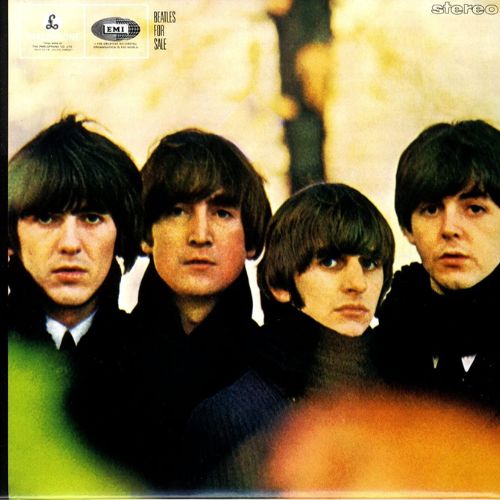
Tracks
- No Reply
- I’m a Loser
- Baby’s in Black
- Rock and Roll Music
- I’ll Follow the Sun
- Mr. Moonlight
- Kansas City / Hey-Hey-Hey-Hey!
- Eight Days a Week
- Words of Love
- Honey Don’t
- Every Little Thing
- I Don’t Want to Spoil the Party
- What You’re Doing
- Everybody’s Trying to Be My Baby
“Beatles for Sale,” the Beatles’ fourth studio album, debuted on December 4, 1964, under EMI’s Parlophone label in the United Kingdom. The album marked a departure from their previous upbeat style, influenced by their exhaustion from extensive 1964 tours. Notably, it wasn’t widely available in the US until 1987 when the Beatles’ catalog was standardized for CD release. The album’s sessions also produced the single “I Feel Fine,” showcasing experimental elements like guitar feedback. Drawing inspiration from country music and Bob Dylan, the album featured darker tones and introspective lyrics. It received favorable reviews in the UK, holding the number one spot for 11 weeks and achieving success in Australia and the US.
9. Beatles ’65 (1964)
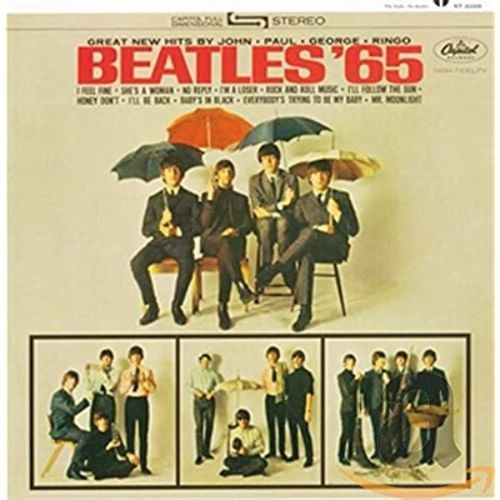
Tracks
- No Reply
- I’m a Loser
- Baby’s in Black
- Rock and Roll Music
- I’ll Follow the Sun
- Mr. Moonlight
- Honey Don’t
- I’ll Be Back
- She’s a Woman
- I Feel Fine
- Everybody’s Trying to Be My Baby
Beatles ’65, released in December 1964, is the fifth studio album by the legendary English rock band, the Beatles. It served as the North American counterpart to ‘Beatles for Sale,’ curated by Capitol Records from the Beatles’ EMI releases. This album also found its way to West Germany through the Odeon label. In 2004, ‘Beatles ’65’ saw its debut on CD as part of the Capitol Albums, Volume 1 box set. In 2014, the album was reissued on CD, both individually and as part of ‘The US Albums’ box set, featuring remastered UK mixes from 2009, allowing fans to relive the Beatles’ musical magic.
10. Beatles VI (1965)

Tracks
- Kansas City / Hey, Hey, Hey, Hey
- Eight Days a Week
- You Like Me Too Much
- Bad Boy
- I Don’t Want to Spoil the Party
- Words of Love
- What You’re Doing
- Yes It Is
- Dizzy Miss Lizzy
- Tell Me What You See
- Every Little Thing
Beatles VI, the seventh studio album by the English rock band the Beatles released by Capitol Records in the United States and Canada, marked a prolific period in the band’s career. Released amidst a flurry of albums in just over a year, it was the ninth Beatles album to hit the North American market during this time. Available in both mono and stereo versions, Beatles VI soared to the number one spot on the Billboard chart, where it remained for a remarkable six weeks starting on July 10, 1965. Interestingly, a New Zealand release of the album in stereo featured a misprinted title as ‘Beatles IV.’ Today, Beatles VI can be found on CD, both individually and as part of various collections, preserving its place in the Beatles’ musical journey.
11. Help! (1965)

Tracks
- Help!
- The Night Before
- You’ve Got To Hide Your Love Away
- I Need You
- Another Girl
- You’re Going To Lose That Girl
- Ticket To Ride
- Act Naturally
- It’s Only Love
- You Like Me Too Much
- Tell Me What You See
- I’ve Just Seen A Face
- Yesterday
- Dizzy Miss Lizzy
“Help!” is the fifth studio album by the Beatles, released on 6 August 1965, and serves as the soundtrack to their eponymous film. This iconic album features seven of its fourteen songs in the film, including hits like “Help!” and “Ticket to Ride.” Notably, “Yesterday” on the second side became one of the most-covered songs in music history. The album garnered critical acclaim and dominated charts in Australia, Germany, the UK, and the US. During its recording, the Beatles explored studio multitracking techniques, introducing elements like a string quartet in “Yesterday” and flutes in “You’ve Got to Hide Your Love Away.”
In the US, “Help!” marked a turning point in critical recognition for the Beatles, earning them a Grammy nomination for Album of the Year in 1966. Over the years, it has received high rankings in various album lists, including Rolling Stone magazine’s “500 Greatest Albums of All Time.” In 2013, it was certified platinum for sales since 1994 in the UK.
12. Rubber Soul (1965)
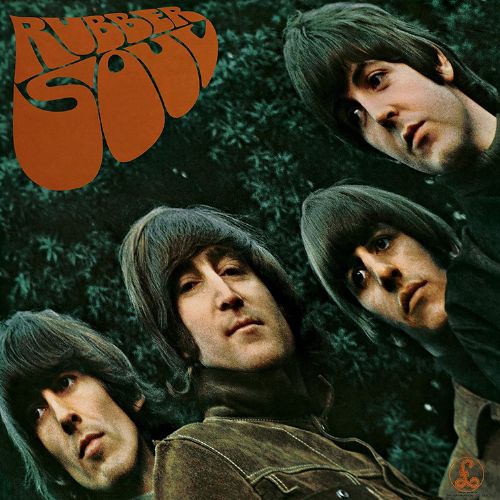
Tracks
- Drive My Car
- Norwegian Wood (This Bird Has Flown)
- You Won’t See Me
- Nowhere Man
- Think For Yourself
- The Word
- Michelle
- What Goes On
- Girl
- I’m Looking Through You
- In My Life
- Wait
- If I Needed Someone
- Run For Your Life
“Rubber Soul,” the Beatles’ sixth studio album, marked a pivotal moment in their career. Released on December 3, 1965, in the UK, the album showcased the band’s artistic growth, featuring original material and a departure from their earlier sound. Recorded over four weeks in London, the album allowed the Beatles to break free from their concert and film commitments, resulting in a blend of pop, soul, and folk styles. The title, inspired by “plastic soul,” highlighted their admiration for African-American soul artists. With brighter guitar tones and innovative instruments like the sitar, “Rubber Soul” paved the way for more expressive musical arrangements. This influential album set the stage for the Beatles’ future groundbreaking works and is hailed as a classic in the evolution of pop music.
13. Yesterday and Today (1966)

Tracks
- Drive My Car
- I’m Only Sleeping
- Nowhere Man
- Doctor Robert
- Yesterday
- Act Naturally
- And Your Bird Can Sing
- If I Needed Someone
- We Can Work It Out
- What Goes On
- Day Tripper
“Yesterday and Today” is a studio album by the Beatles, released in June 1966 in the United States and Canada. It marked their ninth Capitol Records release and contained tracks withheld from previous EMI albums and non-album singles. The album featured songs from “Help!” and “Rubber Soul,” along with three 1966 recordings later included on “Revolver.” Notably, it gained infamy due to its original “butcher cover” image, featuring the band surrounded by decapitated baby dolls and meat, interpreted as commentary on the Vietnam War or record company practices. Capitol replaced the cover, making the original LP a collector’s item, and it was reissued on CD in 2014.
14. Revolver (1966)
Tracks
- Taxman
- Eleanor Rigby
- I’m Only Sleeping
- Love You To
- Here, There And Everywhere
- Yellow Submarine
- She Said She Said
- Good Day Sunshine
- And Your Bird Can Sing
- For No One
- Doctor Robert
- I Want To Tell You
- Got To Get You Into My Life
- Tomorrow Never Knows
“Revolver,” the Beatles’ seventh studio album, released on August 5, 1966, marked a pivotal moment in music history. Preceded by the double A-side single “Eleanor Rigby” / “Yellow Submarine,” it was their last studio project before retiring from live performances. The album showcased their mastery of studio technology, building on the innovations of “Rubber Soul.” “Revolver” is celebrated as one of the greatest and most innovative albums in popular music. It reflects the band’s exploration of psychedelia, LSD, Eastern philosophy, and avant-garde influences. Tracks like “Tomorrow Never Knows” and “Eleanor Rigby” exemplify its diverse sounds. The album’s impact on music is immeasurable, expanding pop’s boundaries and inspiring genres like psychedelic rock and electronica. It remains a timeless masterpiece in the Beatles’ catalog.
15. Sgt. Pepper’s Lonely Hearts Club Band (1967)

Tracks
- Sgt. Pepper’s Lonely Hearts Club Band
- With a Little Help from My Friends
- Lucy in the Sky with Diamonds
- Getting Better
- Fixing a Hole
- She’s Leaving Home
- Being for the Benefit of Mr. Kite!
- Within You Without You
- When I’m Sixty-Four
- Lovely Rita
- Good Morning Good Morning
- Sgt. Pepper’s Lonely Hearts Club Band (Reprise)
- A Day in the Life
“Sgt. Pepper’s Lonely Hearts Club Band,” the eighth studio album by the Beatles, revolutionized music upon its release on May 26, 1967. Considered an early concept album, it pushed boundaries in sound composition, extended form, psychedelic imagery, and record sleeve design. The album bridged the gap between popular music and high art, reflecting the counterculture and youth culture of the era. Inspired by Paul McCartney’s idea of an Edwardian military band, the album showcased a range of influences, including vaudeville, circus, and classical music. Its innovative production and graphic design, along with iconic cover art, marked a cultural shift. It achieved massive critical acclaim and commercial success, shaping the course of music history.
16. Magical Mystery Tour (1967)

Tracks
- Magical Mystery Tour
- The Fool On The Hill
- Flying
- Blue Jay Way
- Your Mother Should Know
- I Am The Walrus
- Hello, Goodbye
- Strawberry Fields Forever
- Penny Lane
- Baby, You’re A Rich Man
- All You Need Is Love
“Magical Mystery Tour,” released as a double EP in the UK and an LP in the US by the legendary English rock band the Beatles, serves as the soundtrack to their 1967 television film of the same name. This innovative project, marked by studio experimentation akin to “Sgt. Pepper’s Lonely Hearts Club Band” and their continued pursuit of a psychedelic sound, was initiated by Paul McCartney in April 1967. However, its development was interrupted until the passing of their manager, Brian Epstein. The sessions yielded iconic tracks like “The Fool on the Hill,” “I Am the Walrus,” and “Hello, Goodbye.” Despite film criticism, the soundtrack achieved both critical acclaim and commercial success, solidifying its place in the Beatles’ storied discography.
17. The Beatles (“The White Album”) (1968)

Tracks
- Back In The U.S.S.R.
- Dear Prudence
- Glass Onion
- Ob-La-Di, Ob-La-Da
- Wild Honey Pie
- The Continuing Story Of Bungalow Bill
- While My Guitar Gently Weeps
- Happiness Is A Warm Gun
- Martha My Dear
- I’m So Tired
- Blackbird
- Piggies
- Rocky Raccoon
- Don’t Pass Me By
- Why Don’t We Do It In The Road?
- I Will
- Julia
- Birthday
- Yer Blues
- Mother Nature’s Son
- Everybody’s Got Something To Hide Except Me And My Monkey
- S**y Sadie
- Helter Skelter
- Long, Long, Long
- Revolution 1
- Honey Pie
- Savoy Truffle
- Cry Baby Cry
- Revolution 9
- Good Night
The Beatles, colloquially known as the White Album, marked the ninth studio release from the renowned English rock band, released on November 22, 1968. In stark contrast to their previous, visually vibrant album covers, the White Album featured a plain, textless sleeve with only the band’s name embossed. This album showcased the Beatles’ diverse musical prowess, spanning genres like folk, blues, ska, and the avant-garde. It boasts 30 songs, with 19 composed during the band’s stay in India in early 1968. However, tensions within the group, exacerbated by creative disputes and personal relationships, eventually contributed to their break-up. Despite mixed political and social climates, the White Album received acclaim, topping charts in the UK and the US and earning platinum status.
18. Yellow Submarine (1969)
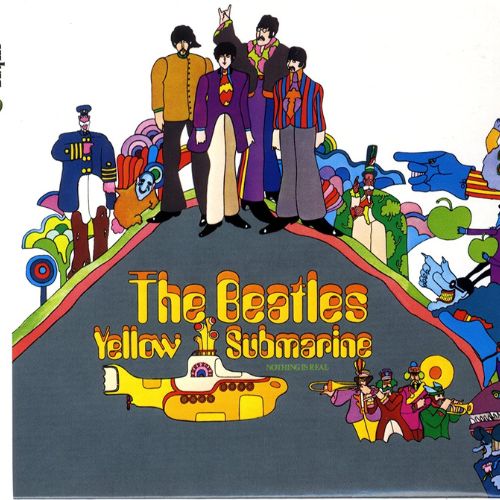
Tracks
- Yellow Submarine
- Only A Northern Song
- All Together Now
- Hey Bulldog
- It’s All Too Much
- All You Need Is Love
- Pepperland
- Sea Of Time
- Sea Of Holes
- Sea Of Monsters
- March Of The Meanies
- Pepperland Laid Waste
- Yellow Submarine In Pepperland
“Yellow Submarine,” the tenth studio album by the Beatles, served as the soundtrack to the animated film of the same name, premiering in July 1968. Released in January 1969, the album featured six Beatles tracks, including four new compositions and previously released hits like “Yellow Submarine” and “All You Need Is Love.” Producer George Martin re-recorded the film’s orchestral soundtrack for the remaining portion of the album. Initially considered a contractual obligation, the album reached the top 5 in both the UK and the US. While some critics found it less impressive than their previous work, “Yellow Submarine” remains an integral part of the Beatles’ musical legacy.
19. Abbey Road (1969)
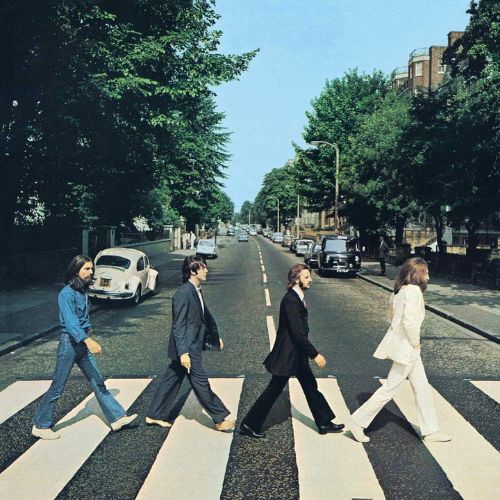
Tracks
- Come Together
- Something
- Maxwell’s Silver Hammer
- Oh! Darling
- Octopus’s Garden
- I Want You (She’s So Heavy)
- Here Comes the Sun
- Because
- You Never Give Me Your Money
- Sun King
- Mean Mr. Mustard
- Polythene Pam
- She Came In Through the Bathroom Window
- Golden Slumbers
- Carry That Weight
- The End
- Her Majesty
“Abbey Road,” the eleventh studio album by the legendary English rock band, the Beatles, stands as a pivotal moment in music history. Released in 1969, it marked the final recording effort by the band, although “Let It Be” was the last album completed before their breakup in April 1970. The album showcases a diverse array of styles, including rock, pop, blues, singer-songwriter, and progressive rock. Notably, it introduced the Moog synthesizer and featured a memorable medley on side two. Despite internal tensions and mixed initial reviews, “Abbey Road” became an instant commercial hit and is now celebrated as one of the Beatles’ greatest achievements, with standout tracks like “Something” and “Here Comes the Sun.” The iconic zebra crossing album cover remains an enduring symbol of their legacy.
20. Let It Be (1970)
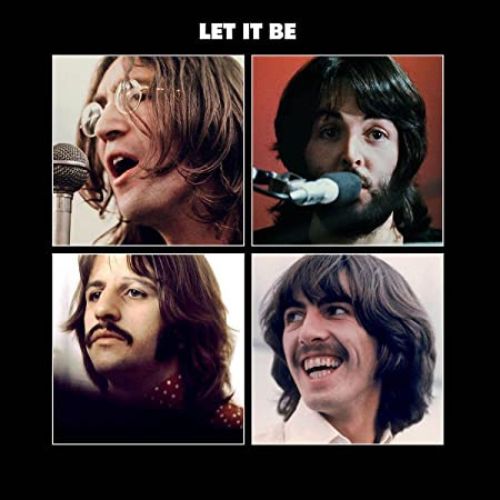
Tracks
- Two of Us
- Dig a Pony
- Across the Universe
- I Me Mine
- Dig It
- Let It Be
- Maggie Mae
- I’ve Got a Feeling
- One After 909
- The Long and Winding Road
- For You Blue
- Get Back
“Let It Be,” the twelfth and final studio album by the iconic English rock band the Beatles, was released on May 8, 1970, just a month after the group’s public breakup. Conceived by Paul McCartney as a return to simpler rock ‘n’ roll, the project began with rehearsals at Twickenham Film Studios in January 1969. Tensions within the band led to George Harrison’s brief departure, but they reunited at Apple Studio with guest keyboardist Billy Preston, culminating in the famous rooftop concert. The album’s initial mixes were rejected, and it was shelved as the band moved on to “Abbey Road.” Phil Spector later produced the album, adding orchestral and choral elements.
Although “Let It Be” topped charts globally, it was initially a critical failure, later inspiring alternative versions like “Let It Be… Naked” and a 2021 remixed and expanded edition, coinciding with “The Beatles: Get Back” documentary.
Thanks for Visit!


